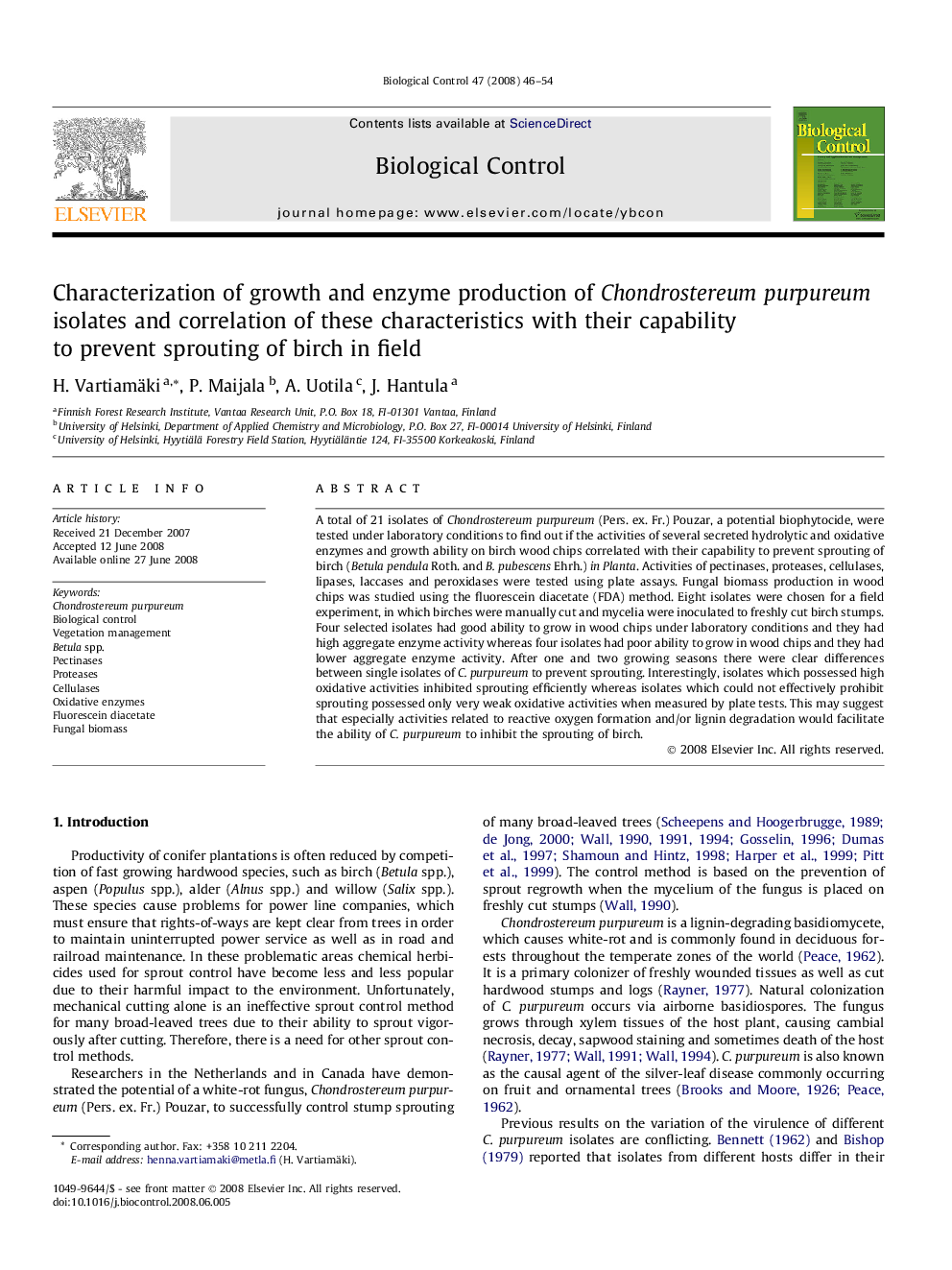| کد مقاله | کد نشریه | سال انتشار | مقاله انگلیسی | نسخه تمام متن |
|---|---|---|---|---|
| 4504769 | 1321110 | 2008 | 9 صفحه PDF | دانلود رایگان |

A total of 21 isolates of Chondrostereum purpureum (Pers. ex. Fr.) Pouzar, a potential biophytocide, were tested under laboratory conditions to find out if the activities of several secreted hydrolytic and oxidative enzymes and growth ability on birch wood chips correlated with their capability to prevent sprouting of birch (Betula pendula Roth. and B. pubescens Ehrh.) in Planta. Activities of pectinases, proteases, cellulases, lipases, laccases and peroxidases were tested using plate assays. Fungal biomass production in wood chips was studied using the fluorescein diacetate (FDA) method. Eight isolates were chosen for a field experiment, in which birches were manually cut and mycelia were inoculated to freshly cut birch stumps. Four selected isolates had good ability to grow in wood chips under laboratory conditions and they had high aggregate enzyme activity whereas four isolates had poor ability to grow in wood chips and they had lower aggregate enzyme activity. After one and two growing seasons there were clear differences between single isolates of C. purpureum to prevent sprouting. Interestingly, isolates which possessed high oxidative activities inhibited sprouting efficiently whereas isolates which could not effectively prohibit sprouting possessed only very weak oxidative activities when measured by plate tests. This may suggest that especially activities related to reactive oxygen formation and/or lignin degradation would facilitate the ability of C. purpureum to inhibit the sprouting of birch.
Journal: Biological Control - Volume 47, Issue 1, October 2008, Pages 46–54